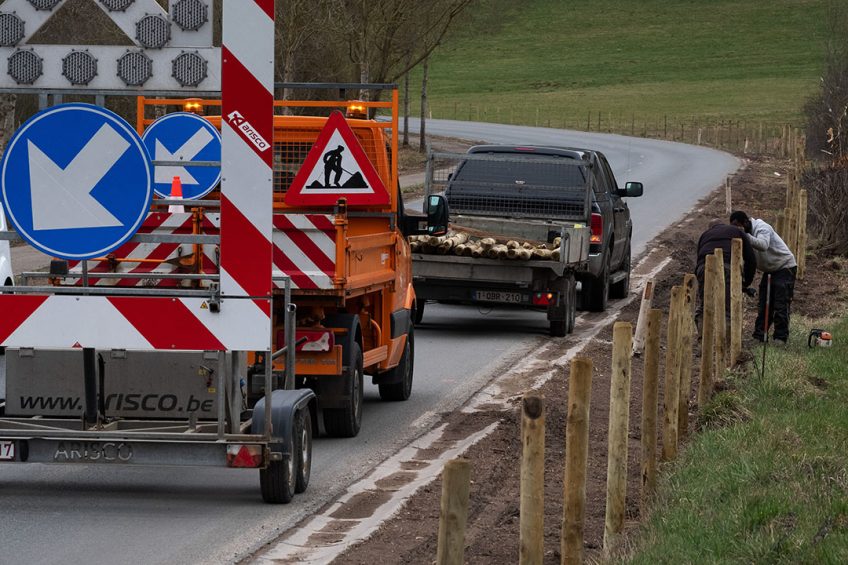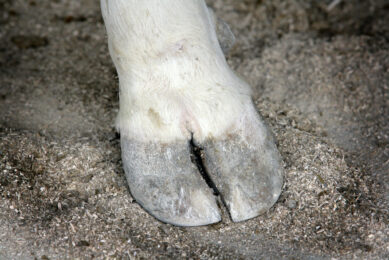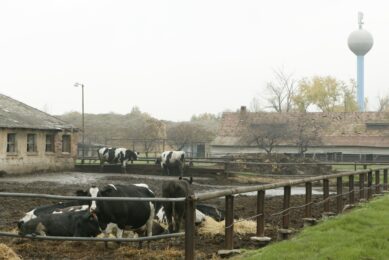African Swine Fever in Belgium – a look back

African Swine Fever took Belgium by surprise in September 2018, but luckily it occurred in wild boar, in a part of the country where not many domestic pigs were kept. The country has hopes that by autumn 2020, the status “free from ASF” can be obtained again.
On 11 August 2019, a young female wild boar was shot in the forests, about 2.5km southwest of Saint-Léger, Luxembourg province, Belgium. The animal must have been between six months and one year old, and the hunters reported that it appeared healthy. When the wild boar’s spleen was sampled and analysed at the laboratory of the University of Liège, however, she turned out to be positive for African Swine Fever virus (ASFv).
Virus in fresh carcass
The case, found 15km as the crow flies from the tripoint between France, Belgium and the country Luxembourg, is worth a bit of attention. Not only was it the 827th case of ASF that was found in Belgium’s wild boar population but, as far as it is known, it was the last time the virus was discovered in a ‘fresh’ carcass in Belgium.
Fast forward to June 2020, when the count is at 833 victims in Belgium’s wild boar population. Since the described case in August 2019, a further six dead wild boar have tested positive for ASF, the last one on 4 March 2020 (see Figure 1). Each of those, however, concerned an emaciated carcass consisting of dry bones, that is, remains of animals that had died months before. Hence, it can be demonstrated that ASF was still around in wild boar in southern Belgium in August 2019 – but it looks unlikely it was there for much longer.
Regain free status
That estimate explains the position taken by the Belgian Federal Agency for the Safety of the Food Chain (FASFC), which has had a pivotal role in fighting ASF in Belgium. In correspondence with Pig Progress, the FASFC’s chief veterinary officer Jean-François Heymans said, “The cases in recent months were all old bones, which allows us to estimate the last viral circulation to September 2019. Unless the situation changes, we will therefore propose to the European Commission and the World Organisation for Animal Health (OIE) to regain our free status one year after this last viral circulation, that is, from October 2020.”

The onset of ASF in Belgium
Belgium’s ASF problems started on 9 September 2018, when three dead wild boar were found near the village Étalle, in the country’s southernmost province, Luxembourg (see Figure 2). When the animals proved positive for ASF, a wave of shock went through Western Europe’s pig industry. At that time the nearest known cases of ASF occurred near Zlín in the Czech Republic, about 1,000km away. Now it was found in a zone that was relatively close to important pig countries like France, Germany and the Netherlands – not to mention Belgium itself.
Fortunately for Belgium, the outbreaks occurred in a part of the country that is not exactly known for pig production. Belgium’s major pig concentration can be found in a wide circle around the city of Roeselare, which is in the northwest of the country, 230km away from the first outbreaks. The wider surveillance zone, identified around the outbreak location, contained only 4,000 domestic pigs and these were all culled as soon as possible, to avoid any potential contamination. Eventually, 6,000 domestic pigs were culled.
Trade partners outside the European Union responded quickly to the news. A range of non-EU countries closed their borders to Belgian pork or at least some of its by-products, including pork-loving nations like China, Mexico, the Philippines, Taiwan and Japan.
Inside the EU, in line with rules of compartmentalisation, the discovery did not directly affect trade as pig and pork shipments could continue as usual. Nevertheless, understandably, Belgian pigs were not rewarded with top prices as the pork could not be exported to major markets outside the EU. That meant that Belgium’s pig prices did suffer. In a few weeks, finisher pig prices at the Belgian Pork Group dropped from € 1.36/kg to € 1.09/kg dead weight. On farm, that translated into lower income. For instance, a Belgian farmer sending 1,000 finisher pigs to slaughter every month explained early in 2019 that he missed out on € 5,000/month because of the situation.
(The bad price situation lasted until March 2019, when Belgium experienced being on the other side of ASF. Due to the presence of the virus in Asia, demand for pork soared globally and prices elsewhere – including Belgium – increased.)

How did the virus get in?
One of the major mysteries around the outbreaks of ASF is how the virus actually got in. After all, the nearest outbreaks were hundreds if not thousands of kilometres away. In short, three theories are suggested as to how the virus entered the country – not surprisingly, they all revolve around human behaviour. None of the theories below has been proved.
The most well-known explanation is that a truck driver who had had enough of his (infected) ham sandwich threw it out of the window.
Another explanation going around, after some arrests were made, was that certain members of Brussels high society would sometimes illegally smuggle wild boar in from Eastern Europe and release them in southern Belgium for hunting purposes.
A third explanation related to the military camp site Lagland. Members of the army might have imported the virus when doing exercises in the Baltic States, where ASF is also prevalent. Various cases of ASF-infected wild boar were found within the camp site’s premises.

Track the movement of African Swine Fever
For everything you need to know about ASF, from the latest outbreaks to controls stay up to-date…
How to eradicate the virus?
Even though it still is not clear how the virus got in, there was a pathway to eradicate it. This was shown to be possible by the Czech Republic, the only country in recent years that has fully eradicated an ASF outbreak and where this has been acknowledged.
The Czech authorities followed the strict EU guidelines on how to deal with the outbreaks around the city Zlín. It comes down to a lot of testing, intelligent hunting, cooperation and total transparency. Normally, after an outbreak, a subdivision is made between an ‘infected zone’ and a ‘surveillance zone’. With the use of fences, first there is an attempt to stabilise the situation. It is essential that the virus cannot move, which is why the centre of the area should not be attacked by shooters immediately. This may lead to a situation where the wild boar attempt to flee, risking a further spread.
In the heart of the infected area with the highest risk, about 115ha of fields were left unharvested on purpose, providing both food and shelter for the wild boar. In the meantime, in the areas surrounding this zone, intelligent and intensive hunting took place, so that the chance of sick wild boar infecting others in outer zones would be minimal. Once that area was “clean”, the hunters went inside the zone with high risk and killed the last remaining wild boar. The last positive case was found on 19 April 2017 in a carcass that had been dead for months.
When the virus was gone for one year, administrative wheels started spinning to give back the Czech Republic its status “free from ASF”. Eventually, the European Commission granted this status in spring 2019. In the end, in the 11 months the virus was present, no domestic pigs had been affected in the Czech Republic, and between 220 and 230 wild boar had died of the virus.
Eradication in Belgium
No wonder then that Belgium is currently hoping for a similar smooth process to get its “free from ASF” status back again. The country is hoping that the European Commission will start counting from the date of the last fresh carcass.
Truth be told, Belgium has followed a pretty similar path to that of the Czech Republic. After all, the virus has been found only in the wild boar population. Hundreds of kilometres of fences were used to stop the movement of wild boar – not only in Belgium, but also along the borders in neighbouring France and Luxembourg. Preventive culling was widely done in northern France as well.
Obviously, doing everything by the book proved to be a challenge. For instance, it was impossible to completely fence off areas as there were also through roads and even motorways crossing the infected zones. In addition, the forests in southern Belgium are not the habitat of wild boar alone – they are also used and frequented by other industries such as tourism and forestry. Although forests can be closed temporarily or partially, a permanent closure would have been disastrous to the economy, so the measures applied always had to be a compromise.
At its largest, the infected area measured 27km north to south and 29km east to west. Especially in February 2019, Europe held its breath when the outbreaks reached a peak of 217 dead positive wild boar (see Figure 2). Near Messancy, in the eastern part of the infected area, on 13 February 2019 the virus was found 3.3km from the border with Luxembourg. Similarly, it came within 1.1km of the French border near the village Sommethonne a few days later, on 17 February 2019. In both cases, however, the virus was not reported from the other side of the borders, keeping the countries Luxembourg and France free from ASF.
From March 2019, the outbreaks decreased – dropping to below 10 per month in June 2019 until 11 August, when the young gilt met her untimely end, near Saint-Léger. Now Belgium is hoping that that will be seen by everyone as the last case and that by October 2020, this nightmare will finally be over.











